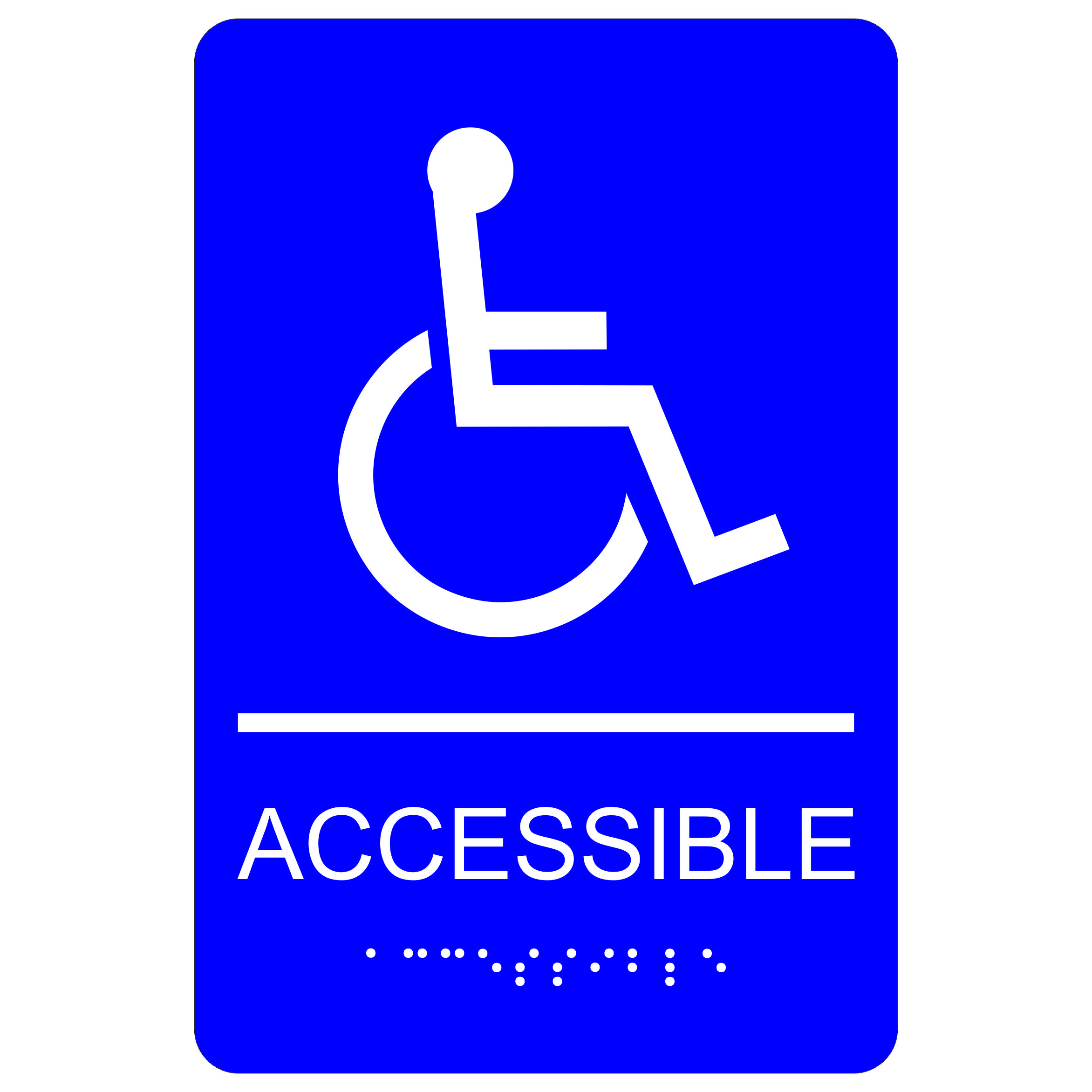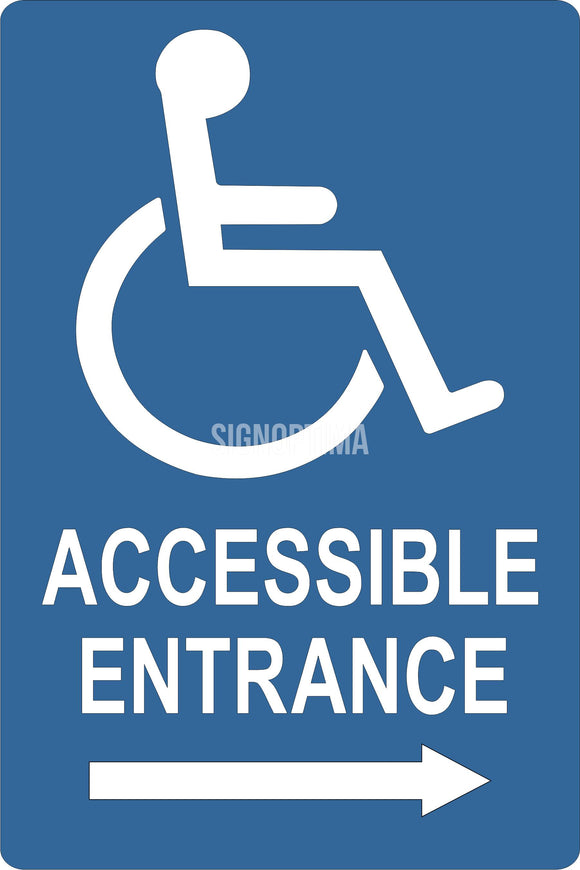The Function of ADA Signs in Abiding By Access Standards
The Function of ADA Signs in Abiding By Access Standards
Blog Article
Discovering the Key Attributes of ADA Indications for Boosted Availability
In the realm of access, ADA indicators offer as silent yet effective allies, making certain that areas are accessible and comprehensive for people with specials needs. By integrating Braille and tactile aspects, these indicators damage obstacles for the visually impaired, while high-contrast shade plans and clear typefaces provide to diverse aesthetic demands.
Significance of ADA Compliance
Ensuring conformity with the Americans with Disabilities Act (ADA) is essential for cultivating inclusivity and equivalent gain access to in public areas and workplaces. The ADA, established in 1990, mandates that all public centers, employers, and transportation services accommodate individuals with disabilities, guaranteeing they take pleasure in the same legal rights and possibilities as others. Compliance with ADA criteria not only satisfies legal commitments however also enhances an organization's reputation by demonstrating its commitment to variety and inclusivity.
One of the vital elements of ADA compliance is the application of available signs. ADA signs are designed to guarantee that individuals with specials needs can conveniently browse via rooms and buildings.
Moreover, adhering to ADA guidelines can reduce the threat of possible fines and lawful effects. Organizations that fall short to abide by ADA guidelines may deal with claims or charges, which can be both damaging and financially difficult to their public image. Thus, ADA compliance is important to cultivating a fair environment for everybody.
Braille and Tactile Components
The consolidation of Braille and responsive aspects right into ADA signage personifies the concepts of ease of access and inclusivity. It is normally placed underneath the corresponding message on signage to make sure that individuals can access the details without visual support.
Responsive elements extend past Braille and include elevated personalities and symbols. These components are created to be discernible by touch, enabling individuals to identify space numbers, washrooms, departures, and other essential locations. The ADA establishes certain standards relating to the size, spacing, and placement of these responsive components to enhance readability and guarantee consistency across various atmospheres.

High-Contrast Color Pattern
High-contrast color systems play an essential function in enhancing the presence and readability of ADA signs for individuals with aesthetic impairments. These systems are crucial as they make the most of the difference in light reflectance in between message and background, guaranteeing that indicators are quickly noticeable, also from a distance. The Americans with Disabilities Act (ADA) mandates making use of specific shade contrasts to accommodate those with restricted vision, making it a vital aspect of conformity.
The efficacy of high-contrast shades exists in their capability to stand out in numerous lighting problems, including poorly lit environments and locations with glare. Commonly, dark text on a light background or light message on a dark background is utilized to attain ideal comparison. Black text on a yellow or white background offers a raw visual distinction that aids in fast recognition and comprehension.

Legible Fonts and Text Dimension
When considering the style of ADA signage, the option of understandable typefaces and suitable text size can not be overstated. These aspects are crucial for guaranteeing that indications are available to individuals with visual impairments. The Americans with Disabilities Act (ADA) mandates that fonts should be sans-serif and not italic, oblique, script, extremely ornamental, or of unusual form. These requirements help ensure that the text is easily readable from a range which the personalities are appreciable to diverse audiences.
According to ADA guidelines, the minimal text height need to be 5/8 inch, and it needs to raise proportionally with checking out distance. Consistency in message size adds to a natural visual experience, aiding people in navigating environments successfully.
Additionally, spacing in between lines and letters is essential to readability. Sufficient spacing stops personalities from showing up crowded, enhancing readability. By adhering to these requirements, designers can dramatically improve accessibility, making sure that signage serves its desired purpose for all people, no matter their aesthetic capabilities.
Efficient Positioning Strategies
Strategic positioning of ADA signs is vital for making the most of access and ensuring compliance with legal criteria. Properly positioned indications assist people with disabilities efficiently, assisting in navigating in public rooms. Key considerations consist of height, visibility, and distance. ADA guidelines stipulate that signs ought to be mounted at a height between 48 to 60 inches from the ground to ensure they are within the line of sight for both standing and seated people. This standard height range is crucial for inclusivity, enabling wheelchair users and individuals of differing elevations to accessibility info effortlessly.
In addition, signs have to be put adjacent to the lock side of doors to allow very easy identification prior to entry. Uniformity in indication placement throughout a facility improves predictability, reducing complication and improving general user experience.

Conclusion
ADA signs play an important function in promoting ease of access by integrating features that deal with the requirements of individuals with impairments. These components collectively promote an inclusive environment, underscoring the relevance of ADA my site conformity in making certain equivalent gain access to for all.
In the realm of accessibility, ADA signs serve as silent yet powerful allies, ensuring that spaces are accessible and comprehensive for people with specials needs. The ADA, passed in 1990, mandates that all public facilities, companies, and transportation solutions fit individuals with disabilities, guaranteeing they take pleasure in the same rights and possibilities as others. ADA Signs. ADA indications are designed to make certain that people with impairments can why not try this out conveniently browse through spaces and structures. ADA guidelines specify that indications should be placed at a height in between 48 to 60 inches from the ground to ensure they are within the line of view for both standing and seated people.ADA signs play a crucial role in advertising accessibility by integrating functions that address the demands of individuals with disabilities
Report this page